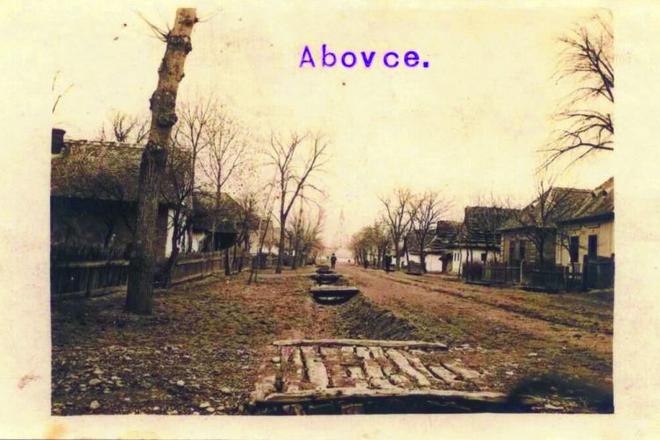THIS postcard of the small village of Abovce is a good illustration of what is so interesting and charming about these old pictures, since the postcards of country settlements show not only how the villages looked when the ohoto was taken but also perspectives from decades earlier. The looks of villages and towns back then did not change as quickly as they do now. Thus it can be said that viewing this picture of Abovce as it looked shortly before World War I can be considered like seeing the village as it was in the second half of the 19th century – and very probably as it was earlier too.
A rough road led through Abovce, stamped by the feet of walkers and by the wheels of coaches. Almost directly in the middle was a ditch used to collect rainwater. And although we can see newer stone houses, small houses with thatched roofs are among them as well.
Abovce has always been a small village without any significant importance even though its name and location are connected with the history of this country. One of the oldest noble families in the Kingdom of Hungary was named Aba and the village’s name is most likely derived from it. Abovce's setting is interesting, too. It lies in the very south of the Gemer region, near the border of today’s Hungary. The Slaná River flows in its vicinity and it was here that a battle between Mongol and Hungarian armies took place in 1241.



